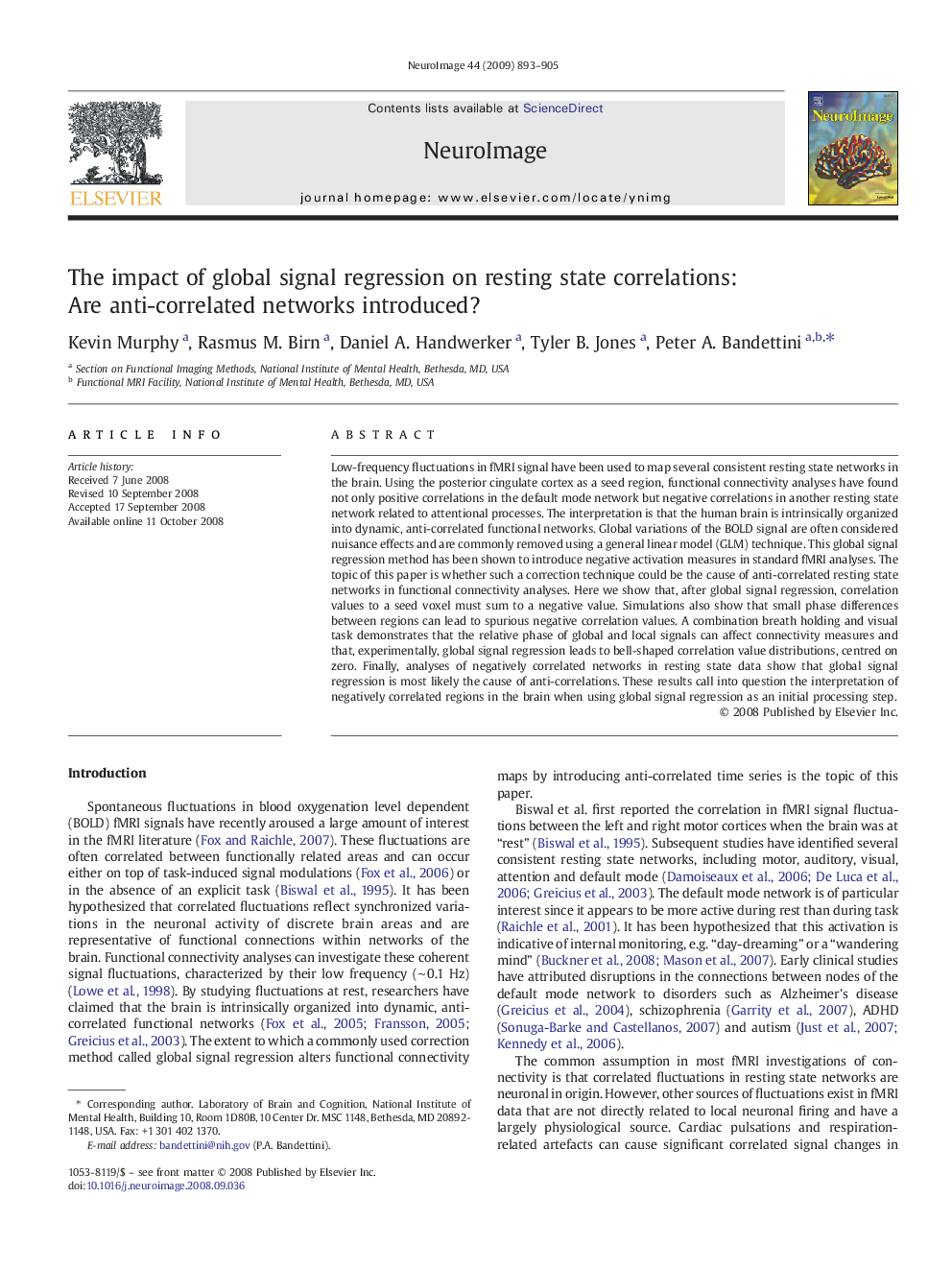| Article ID | Journal | Published Year | Pages | File Type |
|---|---|---|---|---|
| 6038359 | NeuroImage | 2009 | 13 Pages |
Abstract
Low-frequency fluctuations in fMRI signal have been used to map several consistent resting state networks in the brain. Using the posterior cingulate cortex as a seed region, functional connectivity analyses have found not only positive correlations in the default mode network but negative correlations in another resting state network related to attentional processes. The interpretation is that the human brain is intrinsically organized into dynamic, anti-correlated functional networks. Global variations of the BOLD signal are often considered nuisance effects and are commonly removed using a general linear model (GLM) technique. This global signal regression method has been shown to introduce negative activation measures in standard fMRI analyses. The topic of this paper is whether such a correction technique could be the cause of anti-correlated resting state networks in functional connectivity analyses. Here we show that, after global signal regression, correlation values to a seed voxel must sum to a negative value. Simulations also show that small phase differences between regions can lead to spurious negative correlation values. A combination breath holding and visual task demonstrates that the relative phase of global and local signals can affect connectivity measures and that, experimentally, global signal regression leads to bell-shaped correlation value distributions, centred on zero. Finally, analyses of negatively correlated networks in resting state data show that global signal regression is most likely the cause of anti-correlations. These results call into question the interpretation of negatively correlated regions in the brain when using global signal regression as an initial processing step.
Related Topics
Life Sciences
Neuroscience
Cognitive Neuroscience
Authors
Kevin Murphy, Rasmus M. Birn, Daniel A. Handwerker, Tyler B. Jones, Peter A. Bandettini,
